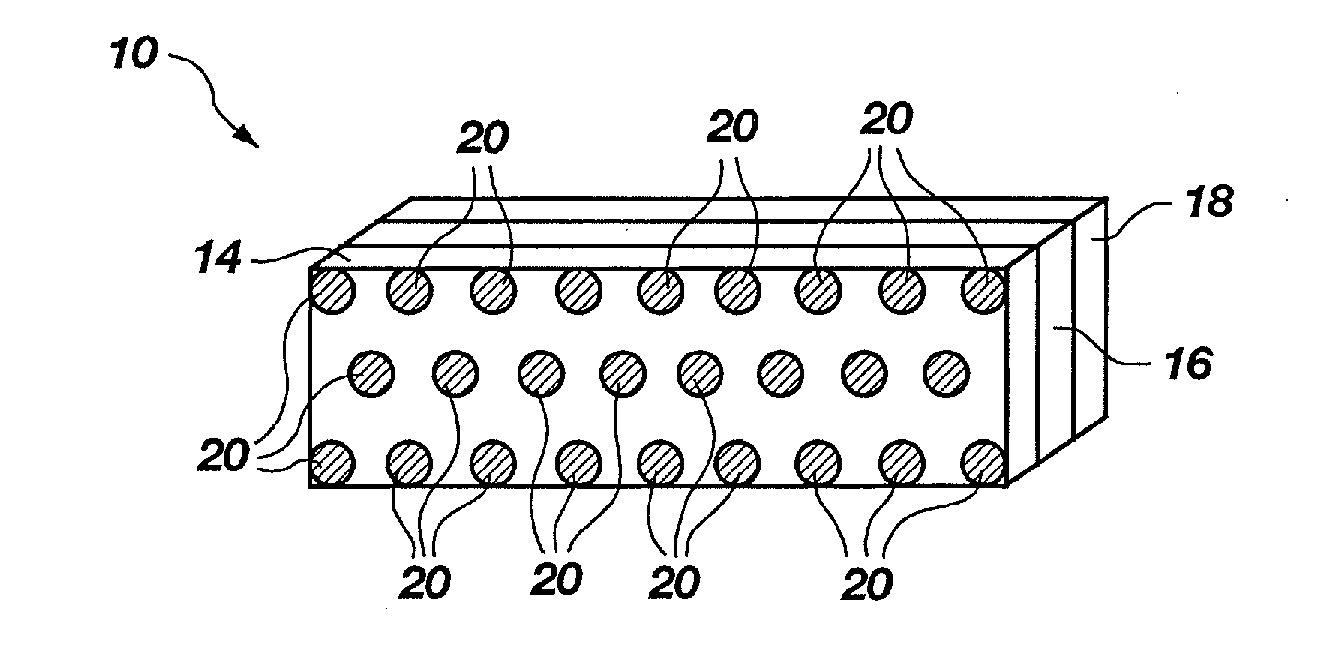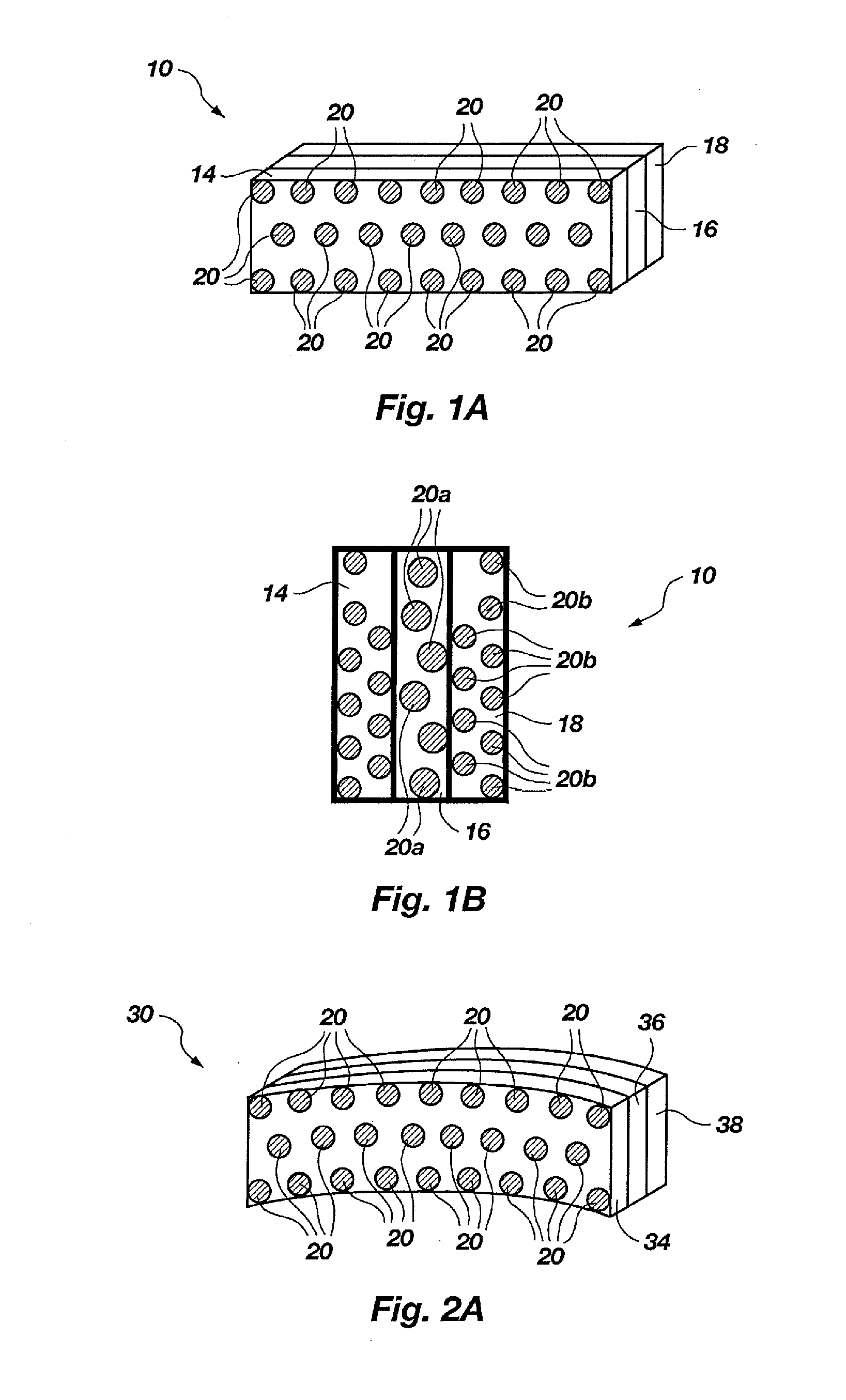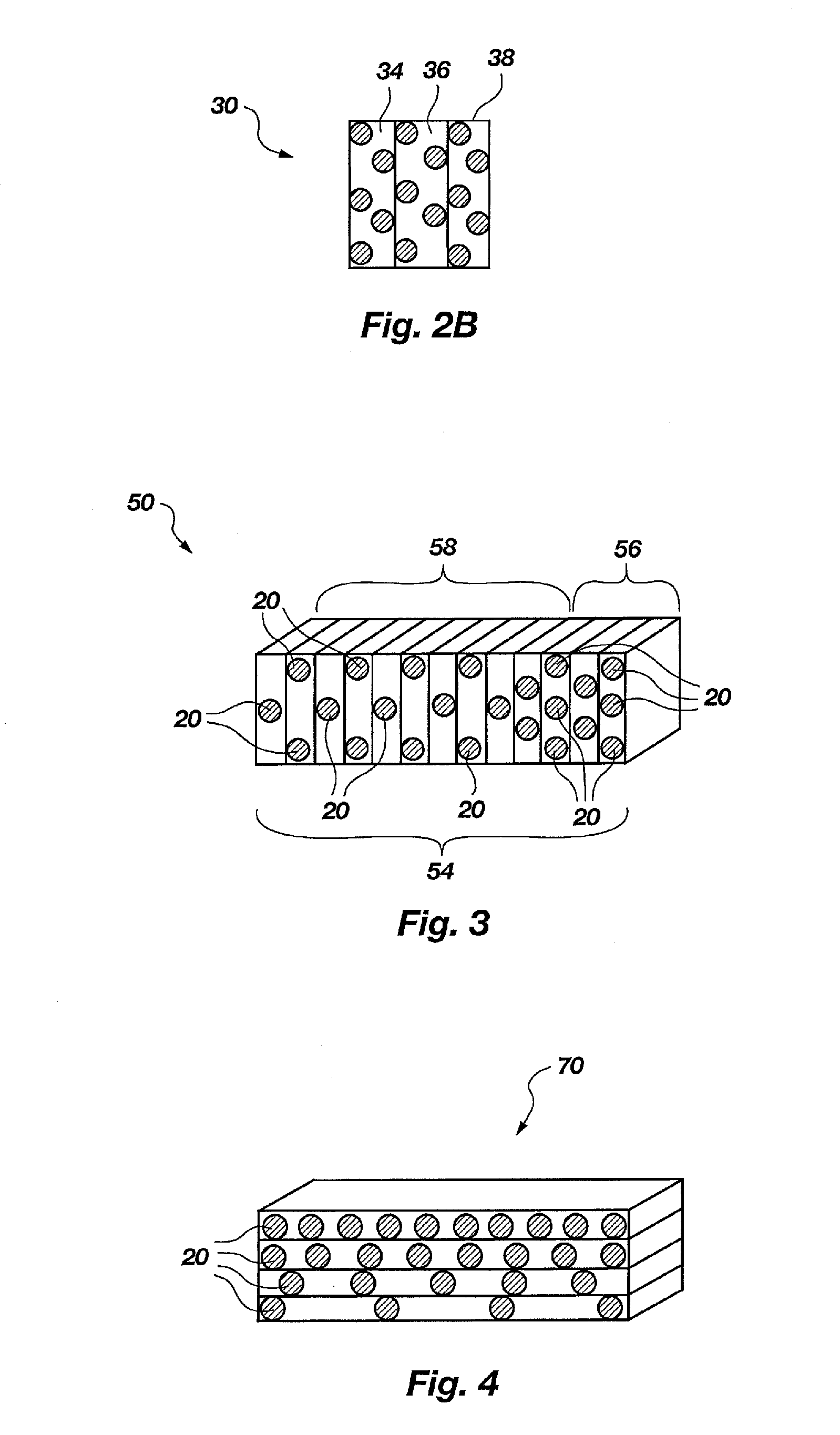Superbrasvie Tools Containing Uniformly Leveled Superabrasive Particles and Associated Methods
a technology of superabrasives and superabrasives, which is applied in the direction of manufacturing tools, abrasive surface conditioning devices, other chemical processes, etc., can solve the problems of economic infeasibility, reduce costs, and not uniform distribution of diamond or cubic boron nitride particles in abrasives, so as to optimize the performance of the superabrasive tool
- Summary
- Abstract
- Description
- Claims
- Application Information
AI Technical Summary
Benefits of technology
Problems solved by technology
Method used
Image
Examples
example 1
[0072]40 / 50 mesh diamond grit (SDA-85 made by De Beers Company) were mixed with metal powder to form a mixture with a diamond concentration of 20 (5% of total volume). Five different proportions of cobalt (about 1.5 micrometer in size) and bronze (about 20 micrometers in size) were used for the matrix powder. An acrylic binder was added (8% by weight) to the mixture and the charge was blended to form a cake. The cake was then rolled between two stainless steel rollers to form sheets with a thickness of 1 mm. These sheets were cut in the shape of saw segments with a length of 40 mm and width of 15 mm. Three each of such segments were assembled and placed into a typical graphite mold for making conventional diamond saw segments. The assembled segments were pressed and heated by passing electric current through the graphite mold. After sintering for three minutes, the segments were consolidated to a height of 9 mm with less then 1% porosity. Twenty-four segments for each composition we...
example 2
[0073]The same procedures were followed as Example 1, but with 8 thinner layers (0.4 mm) being used to form each segment. The diamond concentration was reduced to 15 and particles were planted according to the illustration as shown in FIGS. 5A through 5D, for each layer. The diamond distribution was much improved. As a result, the performance of these blades were equal or better than those made by conventional methods with diamond concentration of 20.
example 3
[0074]Iron powders of about 100 mesh were mixed with an S-binder made by Wall Colmonoy Company to form a cake. The cake was then rolled to form sheets of 0.4 mm in thickness. 40 / 50 mesh SDA-100 diamond grit was planted into these sheets to attain a concentration of 15. These diamond containing sheets were cut in the shape of saw segments with a length of 40 mm and width of 9 mm. Eight of such segments were assembled as a group and placed in a graphite mold. Twenty-four groups were placed horizontally, and another twenty-four groups were placed vertically in the graphite mold. Nicrobraz LM powder (−140 mesh) (made by Wall Colmonoy Company) was added on the top of these segments. These samples were heated in a vacuum furnace (10−5 torr) to 1050° C. for 20 minutes for horizontally placed segments, and 30 minutes for vertically placed segments. The melted LM alloy (Ni—C—B—Si with a liquidus point at 1000° C.) infiltrated into these segments and filled the porosity. The excess LM braze o...
PUM
 Login to View More
Login to View More Abstract
Description
Claims
Application Information
 Login to View More
Login to View More - R&D
- Intellectual Property
- Life Sciences
- Materials
- Tech Scout
- Unparalleled Data Quality
- Higher Quality Content
- 60% Fewer Hallucinations
Browse by: Latest US Patents, China's latest patents, Technical Efficacy Thesaurus, Application Domain, Technology Topic, Popular Technical Reports.
© 2025 PatSnap. All rights reserved.Legal|Privacy policy|Modern Slavery Act Transparency Statement|Sitemap|About US| Contact US: help@patsnap.com



